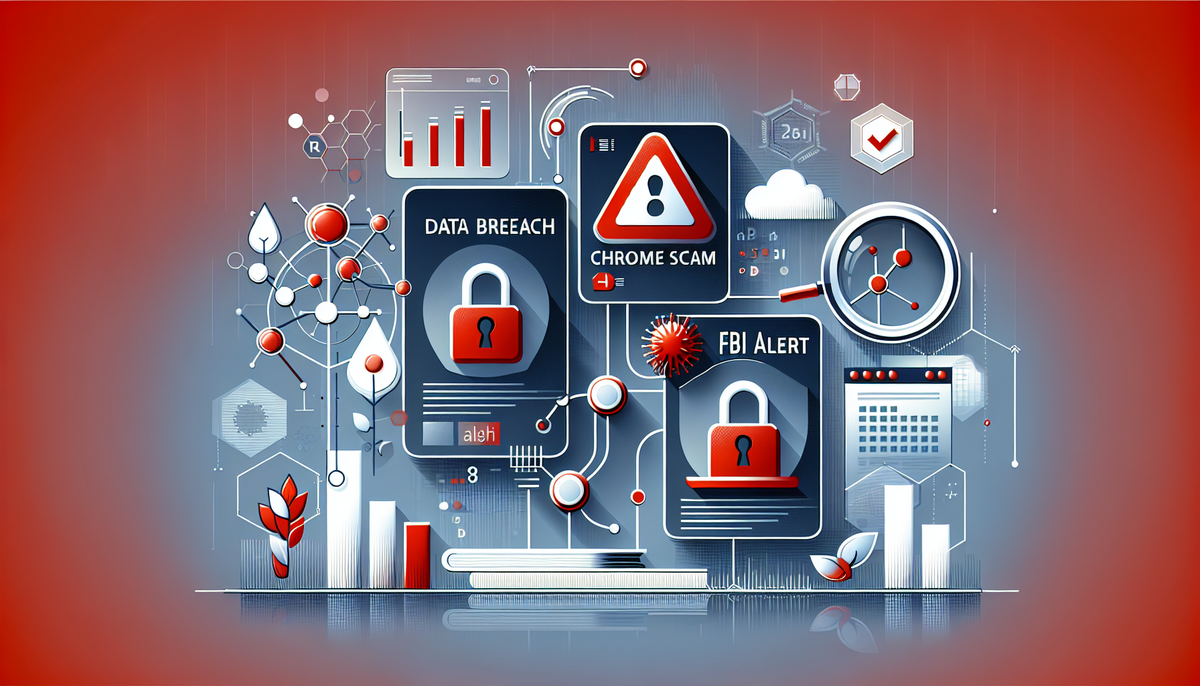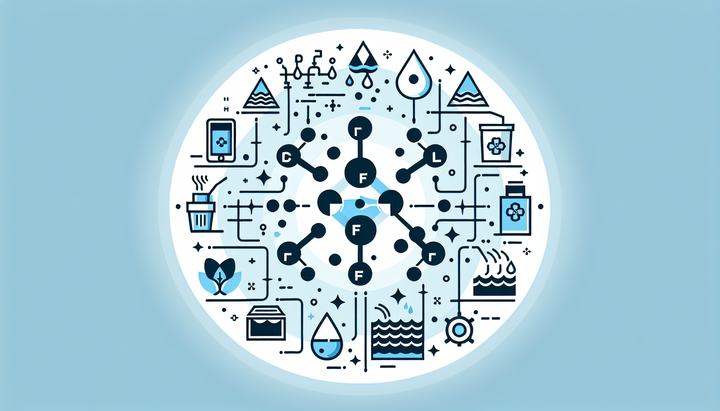FBI Warns: Chrome Scam Endangers Personal Data

Overview of the Chrome URL Scam
The Federal Bureau of Investigation (FBI) has recently issued an urgent warning aimed at all three billion Google Chrome users worldwide. The alert focuses on a sophisticated scheme that utilizes deceptive file converter websites. These sites claim to convert one type of file to another – for example, converting a .doc to a .pdf – but are actually saddled with malicious code. When an unsuspecting user downloads the converter tool, cybercriminals can exploit the software to access vital personal information including social security numbers, passwords, and banking data.
This alarming method of data theft has raised serious concerns among cybersecurity experts and government agencies alike. With an ever-increasing reliance on digital technology for daily transactions and communication, safeguarding sensitive information has become one of the top priorities. This article explores the mechanics of the scam, its impact on users, and steps that experts recommend to mitigate potential damage.
How the Scam Operates
The scam is rooted in the misuse of trusted processes and common online behaviors. Typically, individuals searching for free online file converters may stumble upon these fraudulent websites through search engines. The scammers artfully mimic legitimate sites by slightly altering URLs – for instance, a minor change such as substituting letters or including an extra character can be enough to fool even experienced users.
Once a user downloads the supposed file converter, the software executes malicious code in the background. According to FBI spokesperson Vikki Migoya, many victims remain unaware that they have been compromised until critical damage has already occurred—be it a ransomware infection or identity theft. The scam extends to additional types of converters, including tools for converting MP3 or MP4 files, making it a multi-dimensional threat.
The Role of Malicious Chrome Extensions
Beyond fraudulent converter tools, cybercriminals have also exploited the popularity and extensive reach of browser extensions. Google Chrome users have been notified that several extensions available in the Chrome Web Store have been compromised. Although Google has removed many of these unsafe extensions from its marketplace, users who had already installed them remain exposed to risks.
These malicious add-ons often require broad permissions that allow them to interact with any website a user visits, thereby enabling them to inject harmful code which can harvest data or manipulate search results. Such compromised extensions are a considerable concern as they effectively travel with the user, causing potential damage wherever they browse.
- Deceptive URLs: Scammers create URLs nearly identical to trusted sites.
- Malware Injection: Once the software is downloaded, it introduces malware that operates silently in the background.
- Data Exfiltration: The malicious code extracts sensitive data such as financial information and personal identifiers.
- Ransomware Threats: In some cases, the malware can lead to ransomware attacks that lock users out of their systems unless a ransom is paid.
Scientific and Technological Implications
While this scam might primarily be viewed through the lens of cybersecurity, its implications extend into disciplines such as computer science, data encryption, and even quantum computing research. As technology advances, so too do the methods utilized by cybercriminals. Researchers in quantum computing are developing new encryption techniques that may eventually counteract even the most sophisticated forms of data theft. Meanwhile, cybersecurity experts continue to refine malware detection algorithms and machine learning models to identify and neutralize these threats in real time.
Experts suggest that the arms race between cybercriminals and security professionals is now more pronounced than ever. In today’s digital ecosystem, staying ahead of malicious activities requires continuous innovation, the incorporation of advanced scientific methodologies, and international cooperation. Indeed, breakthroughs in fields like quantum computing could lead to significantly stronger security measures, whereas discoveries in cyber threat analytics help in creating more resilient defense systems.
Real-World Consequences and Recent Incidents
A number of high-profile incidents highlight the real-world consequences of such cyberattacks. For instance, an Iowa-based media company, Lee Enterprises, fell victim to a ransomware attack that was linked to a malicious file converter scam. This attack not only disrupted vital operations, but it also exposed sensitive company data to unauthorized parties. In response, Lee Enterprises had to report the incident to the U.S. Securities and Exchange Commission (SEC) and initiate a forensic analysis to determine the full scope of the breach.
Other organizations have reported system outages and unauthorized data access after falling prey to similar schemes. The pervasive nature of these threats underscores the importance of maintaining up-to-date antivirus and malware-removal tools. Furthermore, it emphasizes the need for users to verify the legitimacy of extensions and applications before installation.
Expert Advice and Cybersecurity Best Practices
In light of these scams, cybersecurity experts have compiled a list of precautions for users. Taking proactive steps can significantly reduce the risk of falling victim to malicious activity. Here are some of the top recommendations:
- Verify the Source: Only download extension tools and file converters from reputable websites or official app stores.
- Review Permissions: Before installing any software, carefully review its permissions. If an extension requests access to a broad range of data or websites, exercise caution.
- Keep Software Updated: Regularly update your antivirus and malware detection software to protect against the latest threats.
- Perform Regular Scans: Run full system scans periodically, especially after installing new extensions or software.
- Educate Yourself: Stay informed about the latest cybersecurity trends and threats by following reputable sources such as the FBI, National Cyber Security Centre, and published research articles in technology journals.
In addition to these steps, consider seeking professional help if you suspect that your system has been compromised. Cybersecurity firms specialize in identifying and removing malware, ensuring that your personal data remains secure.
Understanding the Scientific Frontiers in Cybersecurity
Modern cybersecurity is not merely about protecting systems from theft but is evolving into a science that involves principles from cryptography, artificial intelligence, and even quantum mechanics. Research in these areas offers hope for more robust protection strategies in the future:
- Cryptographic Advances: Innovations in encryption methodologies promise to safeguard data even if a breach occurs.
- Artificial Intelligence: AI-driven systems are increasingly capable of detecting anomalies in user behavior and identifying potential threats before they cause harm.
- Quantum Computing: Although still in its developmental stages, quantum computing holds the potential to revolutionize encryption and decryption processes, making it significantly more challenging for cybercriminals to breach digital defense mechanisms.
These scientific explorations are crucial as they not only contribute to the advancement of cybersecurity but also inspire new strategies to counteract emerging technologies used by cybercriminals.
Global Impacts and the Future of Cyber Threats
The impact of cyber threats such as the Chrome URL scam is felt globally. With billions of users relying on digital platforms for personal and professional activities, the ramifications of a successful cyberattack can be widespread, affecting economies and undermining public trust in digital services.
Government agencies, technology companies, and research institutions must work collaboratively to address these challenges. Industrial partnerships and international agreements are being considered to create unified standards for cyber defense. As cyberattacks grow in complexity and frequency, the exchange of information between nations and the global cybersecurity community becomes vital.
In response, many industry experts predict that future cybersecurity measures will incorporate real-time data analysis, predictive threat modeling, and an unprecedented level of collaboration across borders. The integration of advances in AI and machine learning, alongside traditional security protocols, may soon lead to a more proactive stance against cyber threats. This next generation of security solutions could change the landscape of digital safety, turning reactive measures into more robust, continuous defense strategies.
Steps for the Informed User
For users, understanding the signs of a cyber threat and knowing the steps to take if compromised is crucial. Here are additional tips to help users stay vigilant:
- Be Skeptical of Free Offers: If something seems too good to be true, it probably is. Free online converters or extensions may hide a malicious agenda.
- Use Two-Factor Authentication: Enable two-factor authentication on critical accounts to add an extra layer of security against unauthorized access.
- Monitor Financial Accounts: Regularly check bank and credit accounts for any suspicious activity. Early detection can prevent significant financial loss.
- Report Suspicious Activity: If you believe you have encountered or been affected by a scam, report it immediately to authorities such as the FBI’s Internet Crime Complaint Center (IC3.gov).
By adopting these practices, users can reduce their vulnerability and help to mitigate the overall impact of cybercrime.
Conclusion: A Call to Action
The recent warning by the FBI serves as a stark reminder of the ever-evolving landscape of cyber threats. As malicious actors become more sophisticated in their methods—leveraging seemingly innocuous file converters and compromised browser extensions—the responsibility falls on both users and cybersecurity professionals to remain vigilant.
Scientific advances in cryptography, AI, and quantum computing offer pathways to stronger digital defenses. However, until these technologies become mainstream, the need for informed, proactive measures is paramount. Regular software updates, cautious downloading practices, and a thorough understanding of the permissions requested by digital tools can go a long way in preserving personal data integrity.
Ultimately, the fight against digital crime is a collective effort. By staying informed, utilizing expert advice, and embracing emerging technologies, both individuals and organizations can help ensure a safer online environment. The advancements in science and technology not only pave the way for breakthroughs in our understanding of digital security but also fortify the defenses necessary to protect us in an increasingly interconnected world.
As this cybersecurity saga unfolds, the global community must be prepared to adapt. The tools and strategies that work today may need to evolve tomorrow. It is this dynamic landscape, filled with both risks and opportunities, that underscores the importance of continuous learning and collaboration in the face of cyber threats.
The next generation of security will not only rely on advanced technology but also on an informed public that understands the importance of digital hygiene in an age where cyber threats are a daily reality.



Comments ()